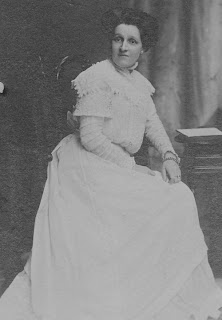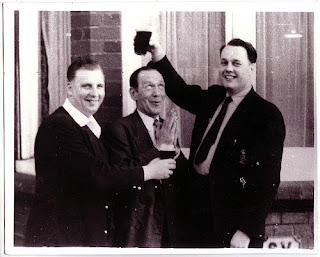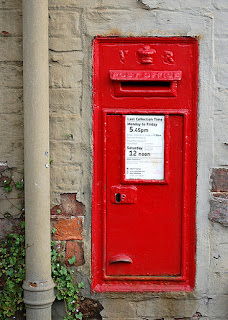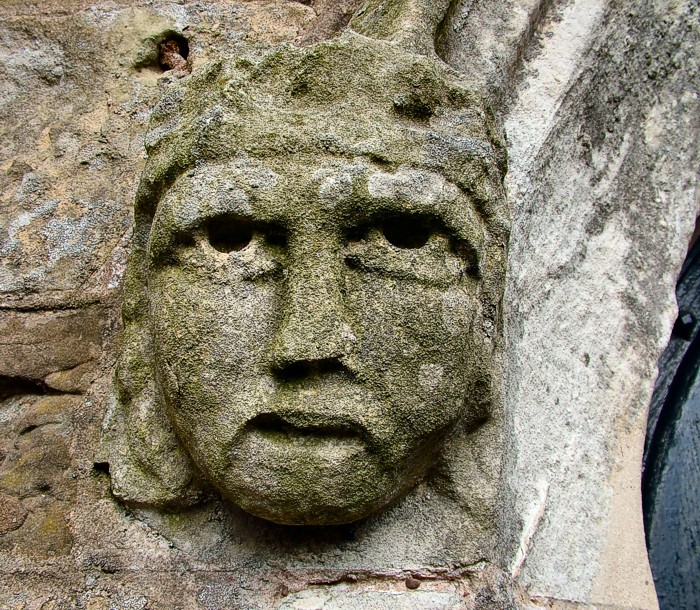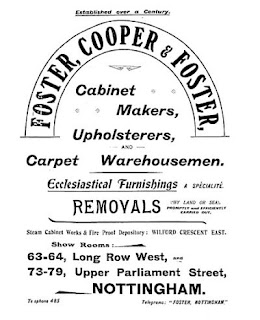 |
| Nottingham Council House © 2009 G Rozsa Creative Commons |
Palethorpes are found in Gedling, Nottinghamshire from the 17th Century. In the 1760s a David Palethorpe married Winifred Oldknow and all their children were baptised with Oldknow as a middle name. This seems a pretty straightforward story. But for the next 150 years all the Palethorpe children - boys and girls - were given the middle name Oldknow and it wasn't just the Gedling Palethorpes who did this. There was also a whole host of other Nottingham families - Bardills, Bassets, Brandreths, Burrows, Clarkes, Hammersley, Harrisons, Huthwaites, Mussons, Oldhams, Swans, Weltons and Wrights - who all took on the name Oldknow in the 19th Century.
This desire by so many families to make a big deal of the name Oldknow obviously suggested that the Oldknows were important people in Nottingham. And initial research revealed that the Oldknow family in Nottingham were indeed prominent industrialists and involved in local politics with members of the family serving as Mayor of the town on 8 different occasions between 1773 and 1879.
Something however still didn't ring true to me. Families like the Palethorpes in Gedling seemed obsessed with highlighting to everyone in their village their very tenuous connection to the Oldknow family. And then I discovered why.
Calling yourself Oldknow in 19th Century Nottinghamshire wasn't just a bit of social snobbery. It was an act of political alleigiance - the equivalent today of calling your children Obama or Romney! Every time these Nottinghamshire families baptised their children Oldknow, they declared themselves "radicals" for the Oldknows were political operators infamous not only in Nottingham but also in Westminster.
Very broadly, English politics in the 18th Century was divided between Whigs and Tories. In crude terms this was a divide between the Whigs who had supported firstly, the "Glorious Revolution" of 1688 which overthrew King James II and established a constitution and secondly, the succession of the Hanoverian Protestant George I to the throne in 1714. Again in crude terms, the Tories had opposed both. Despite their differences, both parties largely represented the interests of the landed aristocracy.
By the end of the 18th Century new political forces were at work. Both America and France had experienced spectacular revolutions and in Britain a new "radicalism" took hold amongst both industrial workers and new self-made industrialists who were religious non-conformists.
Nottinghamshire had a long tradition of religious non-conformity and political rebellion going back to the English Civil War and the Mayflower pilgrims. By the late 1700s a cabal of Baptist industrialists - including the Oldk
nows plus the Birkin, Frearson, Rogers, Leavers and Heard families - had won political power in the town itself and the Oldknows had won themselves such a reputation as radicals sympathetic to the French Revolution, that their house was attacked by a Tory mob.
 |
| Robin Hood © 2012 D Harris Creative Commons |
Political tensions in Nottingham came to the fore in the 1802 election at which the Tory MP Daniel Parker Coke was defeated by the Whig Joseph Birch. Coke was seen to represent the interests of Tory landowners in Nottinghamshire whilst Birch was supported by the radicals on Nottingham Town Council including the Oldknows. Although defeated by a large margin Coke refused to accept the election result and claimed that Thomas and Joseph Oldknow, the magistrates responsible for overseeing the election, had willingly let radicals run riot through the streets of Nottingham, preventing him from speaking and forcing him to leave the town.
Coke, with the support of the Tory establishment in the County, took his case to Parliament and in 1803 a fierce debate was held in the House of Commons as to whether the Nottingham election result should be over turned. In the debate the Oldknows were accused of just about everything under the sun including a "systematic plan ... founded on French principles" - i.e. revolutionary activity - to overthrow Coke. And with the bit between its teeth the Tory majority in parliament pushed to overturn the charter of 1284 by which Edward I had granted the town of Nottingham government of its own affairs.
It fell to Charles James Fox, the leader of the Whigs, in a long and commanding speech to defend the Oldknows, Nottingham's ancient rights and the liberty of the British people themselves: "
They [the Oldknows]
were ready to answer any charges that could be brought forward. They desired to know the nature of their guilt, if any could be alleged, and the degree to which they were guilty? But this was not done. They were not to be taken before any legal tribunal, but they were to suffer from a kind of punishment which excluded trial and defence." Fox cautioned the House "
to beware of the nature of this bill which went to establish a precedent for the invasion of ancient charters ... for it would enable the magistrates of the King's appointment to rule over the magistrates of the people's election. It would be extending that dangerous power of the crown ... for the first attack of all those who meditated the subversion of British liberty was upon corporate towns, upon those charters which formed the best security of popular rights, and the most effectual control on ministerial power - Nottingham was about to lose its privileges for exercising its control. The independent spirit of its corporation was to be the cause of that privation." Stirring stuff and the House of Commons did indeed step back from revoking Nottingham's charter but by a large majority overturned the election that the Oldknows had administered.
 |
| Council House © 2005 S Cadman Creative Commons |
Despite this defeat, the Oldknow family and other radical Baptist industrialists continued to be at the heart of political power in Nottingham. The town council was a vehement supporter of extending voting rights and bitterly condemned the deaths of protesting workers at the "Peterloo Massacre" in 1819. And in the next generation the Oldknow family were notably willing to involve themselves actively in political protests by the ordinary people of Nottingham. In 1817 Octavius Oldknow signed a petition to parliament calling for universal suffrage and in 1832 he attended meetings organised by the working class "Nottingham Political Union" in support of the Reform Act.
It is not clear how many if any of the 19th Century Nottinghamshire families who took the name were directly related to the infamous Oldknows who dominated Nottingham politics but for over a hundred years families such as the Palethorpes in Gedling pinned their colours to their sleeve and let everyone in their village know exactly where they stood politically. Unfortunately, the tradition came to an end with my great grandmother - a staunch Tory and Anglican - who refused to call her Palethorpe children after "those Oldknows".
